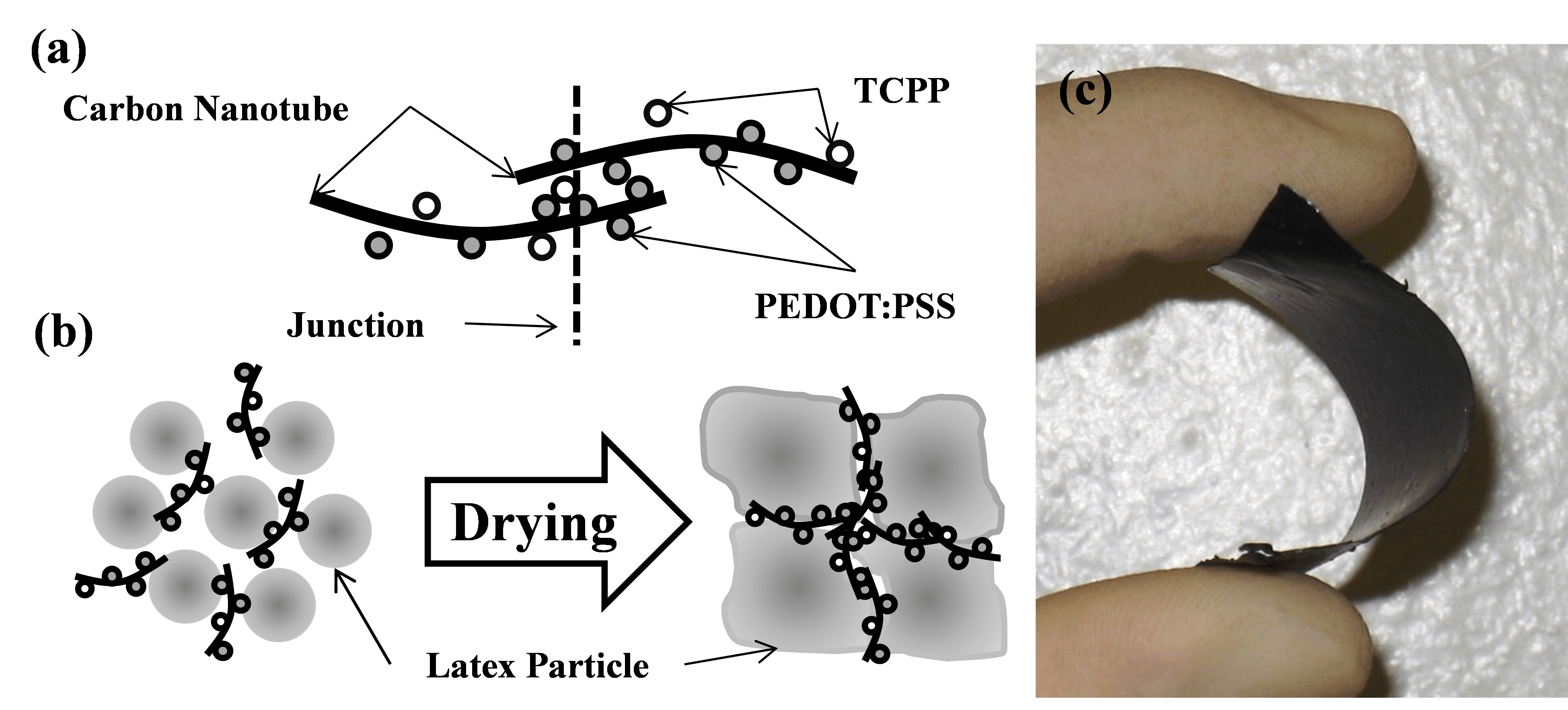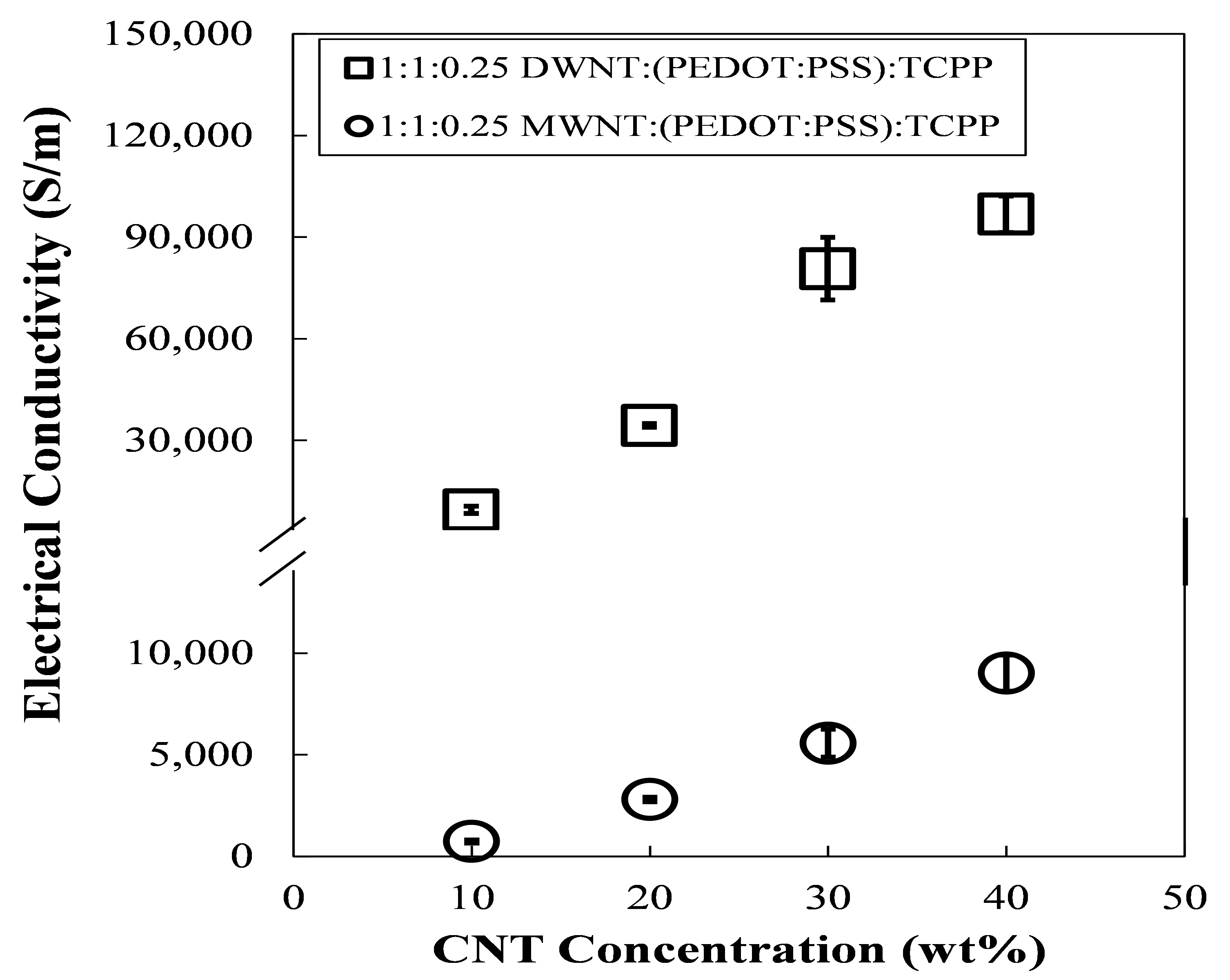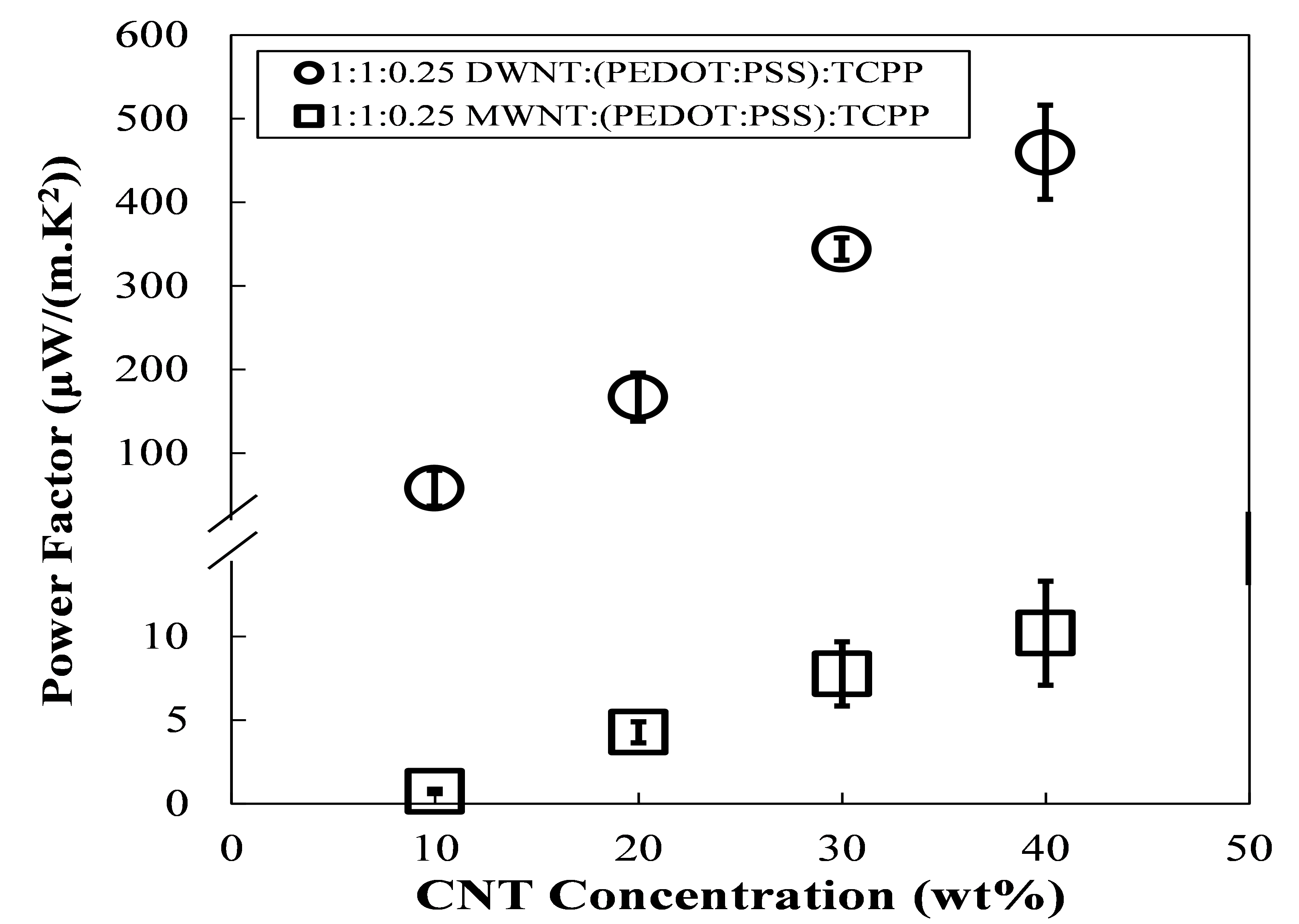In an effort to obtain the low thermal conductivity, high electrical conductivity and Seebeck coefficient needed for efficient thermoelectric performance, segregated networks of carbon nanotubes were made by blending carbon nanotubes with emulsion polymers, such as poly (vinyl acetate) (Nano Letters 2008), PEDOT:PSS (ACS Nano 2010), and mixtures containing both (ACS Nano 2011). Once dry, the network of carbon nanotubes provides high electrical conductivity, while the particulate nature suppresses the thermal conductivity. The addition of semiconducting stabilizers, such as porphyrins, has also been shown to increase power factors up to 500 µW m-1 K-2 (Carbon 2012, Energy Technology 2013). These films typically range in thickness from 10 – 500 µm.

Schematic of carbon nanotubes decorated by PEDOT:PSS and TCPP molecules and the junction formed between them (a) and another depicting the formation of a segregated network composite during polymer coalescence as it dries (b). A fully dried, free standing, flexible composite (c).


In-plane electrical conductivity (left) and power factor (right) as a function of CNT concentration and type (Energy Technology 2013).
